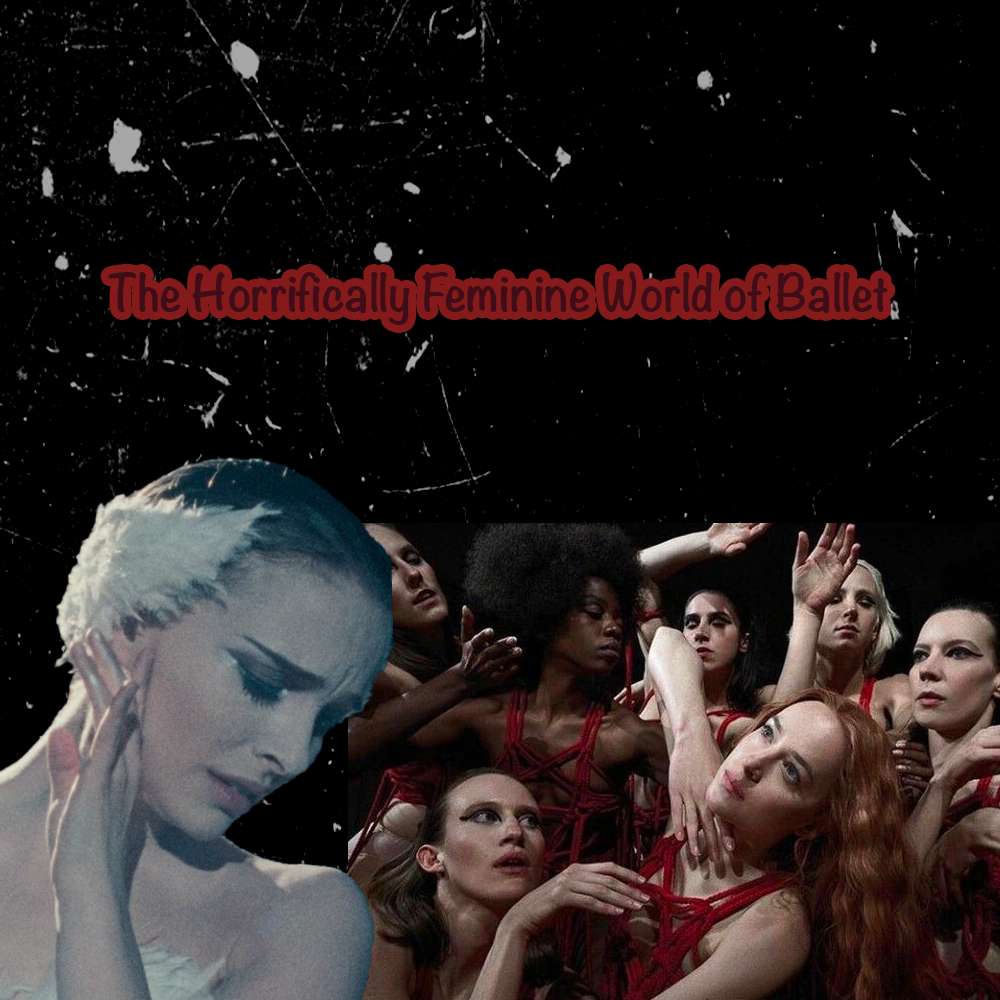Please visit response.fsu.edu for official FSU updates and resources.
Black Swan, Suspiria, and the Horrifically Feminine World of Ballet

As a psychological thriller, Darren Aronofsky's Black Swan (2010) borrows heavily from the gendered tropes of the horror genre while also cultivating some of their own. With its sophisticated score and disorienting cinematography, the maddening beauty of the film defines the "feminine" canon of unsettling stories immersed in the world of ballet. These narratives spotlight its soul-crushing discipline, unnatural physical demands, and distinctly feminine grace to expose the anxiety of female perfection.
Nina (Natalie Portman), the virginal "good girl" archetype that often leads horror stories, is offered the coveted Swan Queen role, where she must challenge herself to embody the White and Black Swan personas. In this pursuit, Nina's body and mind succumb to her frenzied strive for excellence, hallucinating harmful scenarios and pushing her body to bleed and break. Of this trend, feminist writer Ellen O'Connell Whittet poses the question: "Is there such a thing as a ballet that doesn't hurt women?" declaring it a perennial system that has "placed men in positions of administrative and creative power while expecting women to suffer deep physical pain and body-altering trauma in order to perform their art." Nina's physical disfigurement, whether real or hallucinated, is essential to her transformation forced by her director, Thomas (Vincent Cassel). Her legs snap backward, her eyes redden, and black feathers emerge from rashes in her skin, revealing her as the literal Black Swan.
Though Black Swan is indeed a disturbing watch, Luca Guadagnino's Suspiria (2018) confronts the elegant brutality of ballet even more aggressively than Aronofsky. Inspired by Dario Argento's 1977 horror classic of the same name, Guadagnino revamps neon "slasher" violence into supernatural mangling contortion. In a vicious dance sequence, Suzy (Dakota Johnson) flawlessly performs a routine while an unwilling Russian dancer, Olga, is magically compelled to mirror her movements in a mirrored basement studio. Whittet's "body-altering trauma" is realized with excruciating sadism as her body thrashes, twists, and slams into the glass walls with each of Suzy's dignified movements. Her bones dislocate, her ribs dislodged, and her limbs fold outwards. By the end of the number, Suzy has impressed the instructors and advanced in the academy's hierarchy, and Olga's mutilated corpse is unceremoniously discarded.
Both directors employ paranormal experiences to demonstrate how one woman advances to another's detriment. The competitiveness of the ballet academies erodes the camaraderie among the predominately female casts. Lily (Mila Kunis) physically resembles Nina but lacks her inhibition, making her Thomas' chosen alternate for the Swan Queen role and a formidable threat to Nina's career. To cope with this, Nina creates hypernormal fantasies that range from killing Nina to having sex with her. While Argento's original Suspiria film subliminally implies a generational conflict (the haggard Mother of Sighs preying on the young, beautiful dancers), Guadagnino emphasizes it with the young dancers forming a rebellion against their older, magically exploitative "mother-coded" directors. Black Swan also draws on generational divides as a means of competition, as Nina replaces Beth (Winona Ryder) as the academy's star and Thomas' object of desire. Nina's mother (Barbara Hershey) best embodies the trope of an older woman siphoning off the youth as she projects her failed career aspirations onto Nina yet purposefully infantilizes her to prevent a mature Nina from surpassing her. Compared to Guadagnino, Aronofsky offers a distinctly male depiction of female competition, complete with excess vanity, unnatural anti-socialness, and mutual pining over men.
The decomposition of the female body and psyche due to the pressures of male-imposed competition makes for excellent tragedy and thrilling horror. It exploits the gendered notions audiences are already familiar with (e.g., "women and vain and jealous") while also spotlighting the nuanced and unique pressures women face. Ballet demands perfection, while stories like Black Swan and Suspiria prioritize the imperfections of the women who perform it.
Writer: Phaedra Mladenovic
Artist: Solymar Estrella



